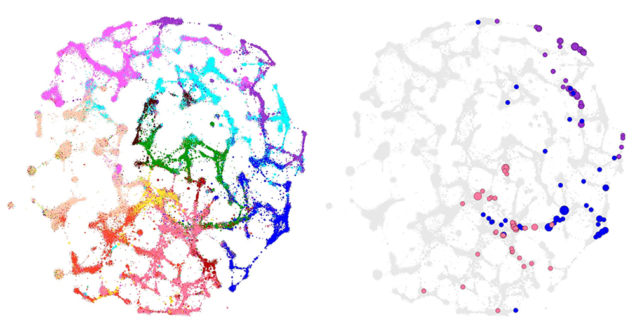
Just five research areas account for more than half of Nobel prizes, even though they publish only 10% of papers, reveals a study by social scientists John Ioannidis, Ioana-Alina Cristea and Kevin Boyack. The trio mapped the number of Nobel prizes in medicine, physics and chemistry between 1995 and 2017 to 114 fields of science, finding that particle physics came top with 14%, followed by cell biology (12%), atomic physics (11%), neuroscience (10%) and molecular chemistry (5%). The analysts also investigated whether Nobel success reflects immediate scientific impact, and found that the only key paper associated with a Nobel Prize which was the most cited that year pertains to the 2010 award to Andre Geim and Konstantin Novoselov for experiments with graphene. On average, more than 400 papers had greater impact than the work most closely associated with the prize-winners’ success within a year either side of the publication dates.
Particle-physics prize-winners in the period studied include: Perl and Reines (1995) for the discovery of the tau lepton and the detection of the neutrino; ’t Hooft and Veltman (1999) for contributions to electroweak theory; Davis and Koshiba (2002) for the detection of cosmic neutrinos; Gross, Politzer and Wilczek (2004) for asymptotic freedom; Nambu, Kobayashi and Maskawa (2008) for work on spontaneous symmetry breaking and quark mixing; Englert and Higgs (2013) for the Brout–Englert–Higgs mechanism; and Kajita and McDonald (2015) for the discovery of neutrino oscillations. The team also chose to class Mather and Smoot’s 2006 prize relating to the cosmic microwave background, Perlmutter, Schmidt and Riess’s 2011 award for the discovery of the accelerating expansion of the universe, and Weiss, Barish and Thorne’s 2017 gong for the observation of gravitational waves as particle-physics research.
The winners of this year’s Nobel prize in physics will be announced on Tuesday 6 October.
Further reading
J. Ioannidis et al. (2020) Work honoured by Nobel prizes clusters heavily in a few scientific fields. PLoS ONE 15(7): e0234612.








